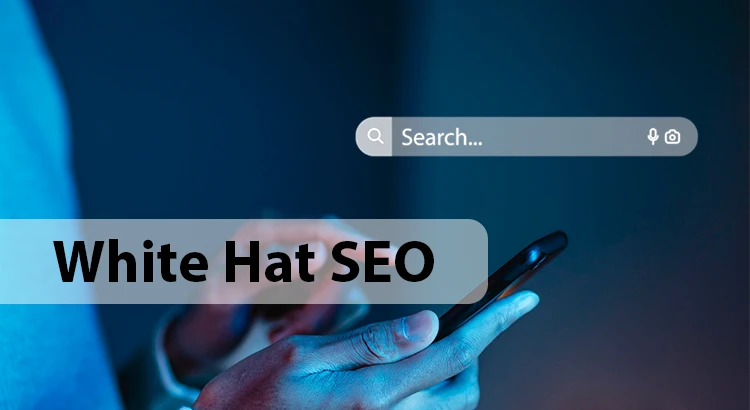White hat SEO strategies focus on improving your site’s visibility while staying within approved search engine practices. This approach to search engine optimization prioritizes ethical methods that align with official guidelines. It helps websites grow steadily without risking penalties. This article explores safe, long-term methods for boosting online visibility.
What Is White Hat SEO?
It refers to ethical methods used to improve a site’s performance in search results while fully complying with search engine guidelines. Unlike manipulative shortcuts often seen in black hat tactics, this approach emphasizes value and transparency.
Common practices include creating genuinely useful content, earning natural backlinks, and offering a seamless user experience. Professionals typically follow the latest updates in Google Search Essentials to stay aligned with platform requirements.
Benefits of White Hat Search Engine Optimization
By focusing on ethical website improvement, this approach provides advantages that extend beyond short-term rankings. Below are key reasons professionals prefer these methods.
1. Delivers Sustainable Results
White-hat site optimization supports long-lasting visibility. When your website ranks well using these techniques, it’s more resilient to algorithm updates. This stability comes from aligning with official rules, which Google are less likely to penalize.
2. Builds Trust and Online Credibility
Using these practices helps your website gain credibility with search engines and users. Over time, this trust translates into better visibility and higher engagement. People are more likely to interact with content that appears safe and authoritative.
3. Reduces Long-Term Costs
Unlike risky shortcuts, ethical optimization tends to be more cost-effective over time. Initial efforts might take longer, but the results are steady and require fewer corrections. Avoiding penalties also prevents future expenses related to damage control.
4. Easy to Implement and Manage
Many approved methods are straightforward and focus on things like clean page structure, content clarity, and internal linking. These improvements don’t demand technical expertise, making the process more accessible for business owners.
5. Complies with Legal and Ethical Standards
Following approved website enhancement methods ensures you stay within legal boundaries. There’s no misuse of other platforms, content theft, or system manipulation. This not only keeps your brand safe but also strengthens your long-term reputation.
White Hat SEO Techniques
Professionals who follow this path focus on sustainable and user-centric improvements. The following techniques prioritize long-term visibility and compliance.
1. Keyword Research
Effective keyword research helps identify the most relevant search terms to target. By focusing on keywords with high search volume and low competition, you can create content that drives valuable traffic to your site. Use tools like Google Keyword Planner, SEMrush, or Ahrefs to find keywords that match user intent. Ensure that keywords are naturally integrated into your content, including headings, titles, and image alt texts.
2. Create High-Quality and Unique Content
Content is the cornerstone of effective site optimization. Offering original and valuable information that aligns with user intent ensures that your audience finds what they’re looking for. Google prioritizes high-quality content that provides real value to users. Avoid republishing old material or relying on low-quality sources, as this can harm your rankings.
3. Focus on Readability and Regularly Update Content
Making content easy to read improves user experience. Use simple language, break text into short paragraphs, and include headings and bullet points for better engagement. Also, regularly update older material to keep it fresh and relevant, which helps maintain website rankings over time.
4. On-Page Site Optimization
On-page optimization involves fine-tuning the elements within your website, such as title tags, meta descriptions, and headers, to make it easier for search engines to understand the material. Structuring URLs, optimizing images, and ensuring keyword integration in key areas contribute to better website rankings.
5. Use Infographics
Infographics can enhance user engagement by presenting information visually. They help break down complex data into easily digestible chunks, making your material more appealing and shareable.
6. Internal Linking
Strategic internal linking connects material pages within your website, making it easier for search engines to crawl and index your material. Proper internal linking also keeps users engaged, guiding them through related articles and increasing page views.
7. Mobile Optimization
With mobile traffic now surpassing desktop, ensuring that your website is mobile-friendly is crucial. Optimize for smooth navigation, fast load times, and responsive design to ensure that users have a positive experience, regardless of the device they use.
8. Page Load Speed
A fast website leads to better user engagement and higher rankings. By optimizing images, minimizing code, and choosing a reliable hosting service, you can improve site speed, reducing bounce rates and improving your overall site performance.
9. Focus on User Experience (UX)
A positive user experience is essential for ranking well in SERPs. Sites that provide a smooth experience, with fast loading times, mobile optimization, and secure browsing (HTTPS), are favored by Google. User-friendly design and avoiding intrusive ads can lead to higher rankings.
10. Technical Site Optimization
Technical optimization involves improving your site’s technical aspects, such as ensuring fast load times, fixing broken links, and making sure search engines can easily crawl and index your pages. These elements are essential for maintaining an efficient, high-ranking site.
11. Backlink Building
Quality backlinks from reputable sources increase your website’s authority and improve your rankings. Focus on acquiring links from trusted, relevant websites, and avoid manipulative techniques like paid links. Engage in practices such as guest posting, broken link building, and content promotion to earn valuable backlinks.
12. Use Structured Data
Structured data helps Google better understand your material and can increase the likelihood of appearing in rich snippets. By using schema markup, you can provide detailed information about your material, such as authorship, ratings, and more, helping to boost visibility in SERPs.
Wrapping Up
Opting for ethical website ranking practices guarantees safer growth and consistent online visibility. These methods may take longer to show results, but they reduce risk and build genuine authority. Whether you’re managing a new blog or an enterprise site, responsible approaches offer lasting value. Explore the techniques above to create a strong, penalty-free foundation for your site.


